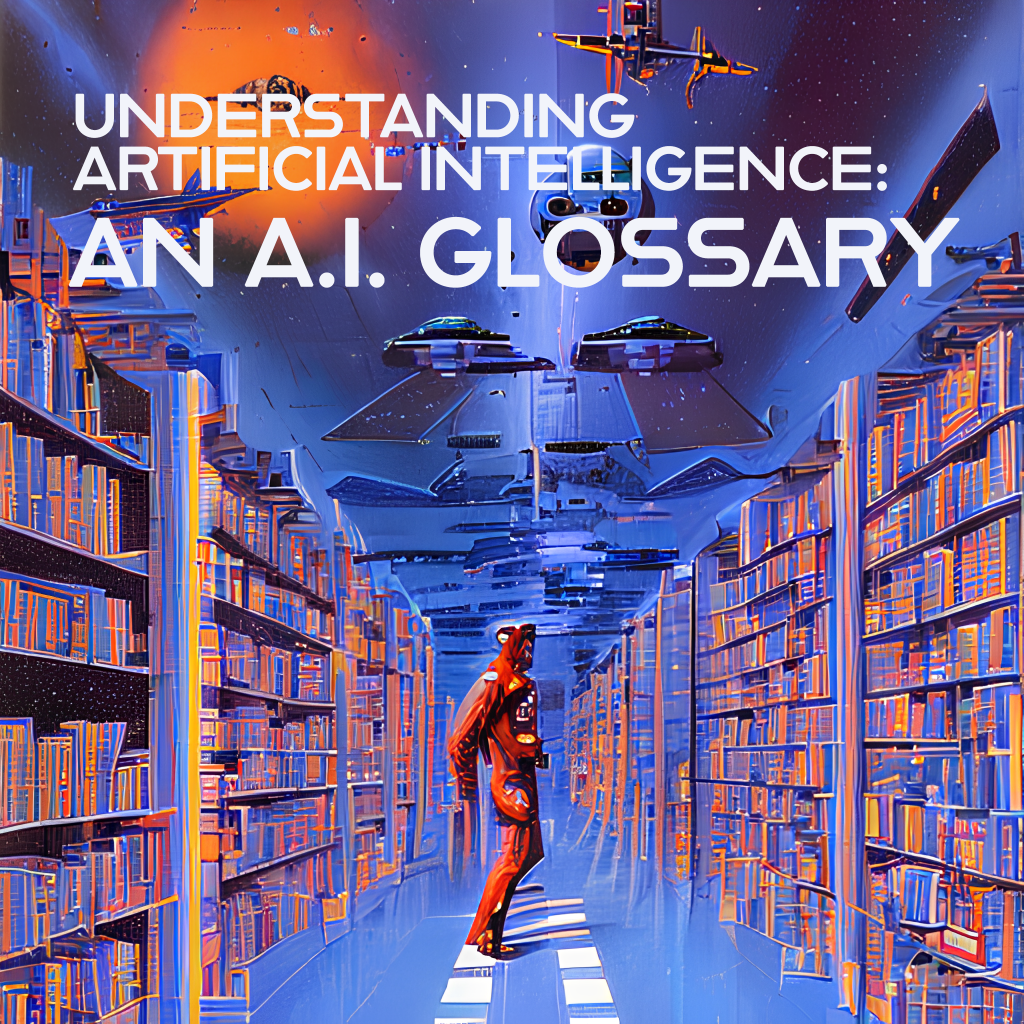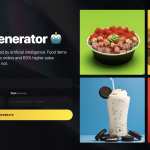What are main terminologies used in AI?
Artificial intelligence (AI) is a rapidly growing field that is rapidly impacting the way in which we interact with technology. It has revolutionized numerous industries and is changing how we live, work and communicate. For content creators, marketers and entrepreneurs, it’s essential to understand the basics of AI, including its terminology, techniques, and algorithms.
Below, The Dept provides you with a robust AI glossary of AI industry terms for easy reference. Let us know if there are terms that you’d like to see added here.
AI Glossary: Definitions
Artificial Intelligence (AI) – A branch of computer science that focuses on creating machines that can perform tasks that typically require human intelligence, such as recognizing speech, playing games, and making decisions.
Machine Learning – A subset of AI that involves the use of algorithms and statistical models to enable computers to improve their performance at a task with experience.
Deep Learning – A type of machine learning that uses multi-layer artificial neural networks to model and solve complex problems.
Neural Network – A mathematical model inspired by the structure and function of the human brain, used in machine learning to solve complex problems.
Generative AI – A type of artificial intelligence that is capable of creating new content, such as images, music, text, and videos, without human intervention.
Supervised Learning – A type of machine learning where the model is trained on labeled data to make predictions about future data.
Unsupervised Learning – A type of machine learning where the model is trained on unlabeled data to find patterns and relationships in the data.
Image Generation – Realistic images such as faces, landscapes, and animals are generated using GANs and other models.
Text Generation – Generative AI creates new pieces of text, including news articles, stories, and poems, using RNNs, LSTMs, and GPT.
Music Generation – AI is used to create new pieces of music in a variety of styles and genres, through the use of RNNs, LSTMs, and GANs.
Voice Generation – High-quality speech and singing voices can be generated through the use of generative models like WaveNet and deep learning techniques.
Virtual Content Creation – Generative AI is used to create virtual objects such as 3D models, scenes, and animations with the help of computer graphics.
Reinforcement Learning – A type of machine learning where the model is trained through a system of rewards and punishments to make decisions in an environment.
Classification – A type of machine learning task where the model is trained to predict the class or category of a given input.
Regression – A type of machine learning task where the model is trained to predict a continuous value.
Generative Adversarial Network (GAN) – A type of deep learning model that consists of two neural networks: a generator and a discriminator. The generator creates new data, while the discriminator tries to distinguish between the generated data and the real data.
Autoencoder – A type of neural network that is trained to reconstruct its input data.
Convolutional Neural Network (CNN) – A type of neural network that is designed to handle image data and is commonly used for computer vision tasks such as image classification and object detection.
Recurrent Neural Network (RNN) – A type of neural network that is designed to handle sequential data, such as time series or natural language.
Long Short-Term Memory (LSTM) – A type of RNN that is designed to overcome the problem of vanishing gradients in traditional RNNs.
Video Generation – New videos including music videos, animations, and advertisements can be generated with GANs and other models.
TensorFlow – An open-source software library for machine learning developed by Google.
PyTorch – An open-source machine learning library developed by Facebook.
Keras – An open-source software library for deep learning that provides a high-level interface for developing and training neural networks.
Feature Engineering – The process of creating new features or modifying existing features in a dataset to improve the performance of a machine learning model.
Overfitting – A problem in machine learning where a model becomes too specialized to the training data, making it unable to generalize to new data.
Bias-Variance Tradeoff – A fundamental concept in machine learning that refers to the balance between a model’s ability to fit the training data (bias) and its ability to generalize to new data (variance).
Gradient Descent – An optimization algorithm used in machine learning to minimize the loss function of a model.
Hyperparameter Tuning – The process of adjusting the hyperparameters of a machine learning model to optimize its performance.
Generative Adversarial Networks (GANs) – A type of deep learning algorithm that consists of two neural networks: a generator and a discriminator. The generator creates new data, while the discriminator tries to distinguish between the generated data and the real data.
Variational Autoencoders (VAEs) – A type of generative model that uses a neural network to learn a compact representation of the data, called a latent space, from which new data can be generated.
Flow-Based Generative Models – A type of generative model that uses normalizing flow to learn a mapping from a simple random noise to the target distribution.
Generative Pretrained Transformer (GPT) – A type of deep learning algorithm based on the transformer architecture that can be fine-tuned for various natural language processing tasks, such as language translation, question answering, and text generation.
Deep Convolutional Generative Adversarial Networks (DCGANs) – A type of GAN architecture specifically designed for generating images, using convolutional neural networks as the generator and discriminator.
StyleGAN – A type of GAN architecture designed for generating high-resolution images, capable of controlling various aspects of the generated images, such as pose, expression, and background.
Autoregressive Models – A type of generative model that uses a recurrent neural network to predict the next token in a sequence, one token at a time.
WaveNet – A type of generative model for audio, capable of synthesizing high-quality speech and music, using dilated convolutions to capture long-range dependencies in the audio signal.
Music Generative Models – A type of generative model for music, capable of synthesizing new pieces of music in different styles and genres, using various deep learning techniques, such as RNNs, LSTMs, and GANs.
Text Generative Models – A type of generative model for text, capable of synthesizing new pieces of text, such as stories, poems, and news articles, using various deep learning techniques, such as RNNs, LSTMs, and GANs.
Regularization – A technique used in machine learning to prevent overfitting by adding a penalty term to the loss function of the model.
Decision Tree – A type of machine learning model that uses a tree-like structure to make predictions by asking a series of questions about the features of the data.
Random Forest – A type of ensemble learning method that combines multiple decision trees to improve the accuracy of predictions.
Support Vector Machine (SVM) – A type of machine learning model that finds the boundary that best separates the data into different classes.
k-Nearest Neighbors (k-NN) – A type of machine learning model that makes predictions by finding the k-nearest neighbors in the training data and taking a majority vote.
Principal Component Analysis (PCA) – A dimensionality reduction technique used in machine learning to reduce the number of features in a dataset while preserving as much of the variation as possible.
Latent Dirichlet Allocation (LDA) – A generative probabilistic model used in natural language processing to identify topics in a corpus of documents.
Word Embedding – A technique used in natural language processing to represent words as vectors in a high-dimensional space, capturing their semantic relationships.
Are there other terms you’d like to see added to the AI Glossary? Leave a comment below.
RELATED:
• Essential Web3 Terms for Creators and Marketers
• Beyond ChatGPT and Midjourney: More AI Tools To Explore




Pingback: History Of A.I.: 12 Programs That Paved The Way For ChatGPT
Pingback: Can A.I. Help Stop Climate Change?
Pingback: AI Space Race? Google Bard Is An AI Chatbot To Compete with Microsoft ChatGPT – THE DEPT OF NEXT
Pingback: Wonder Studio's Stunning New AI Tool May Revolutionize CGI - And Filmmaking – THE DEPT OF NEXT
Pingback: Poe by Quora: Like Having A Roomful Of Experts Working Together For You – THE DEPT OF NEXT